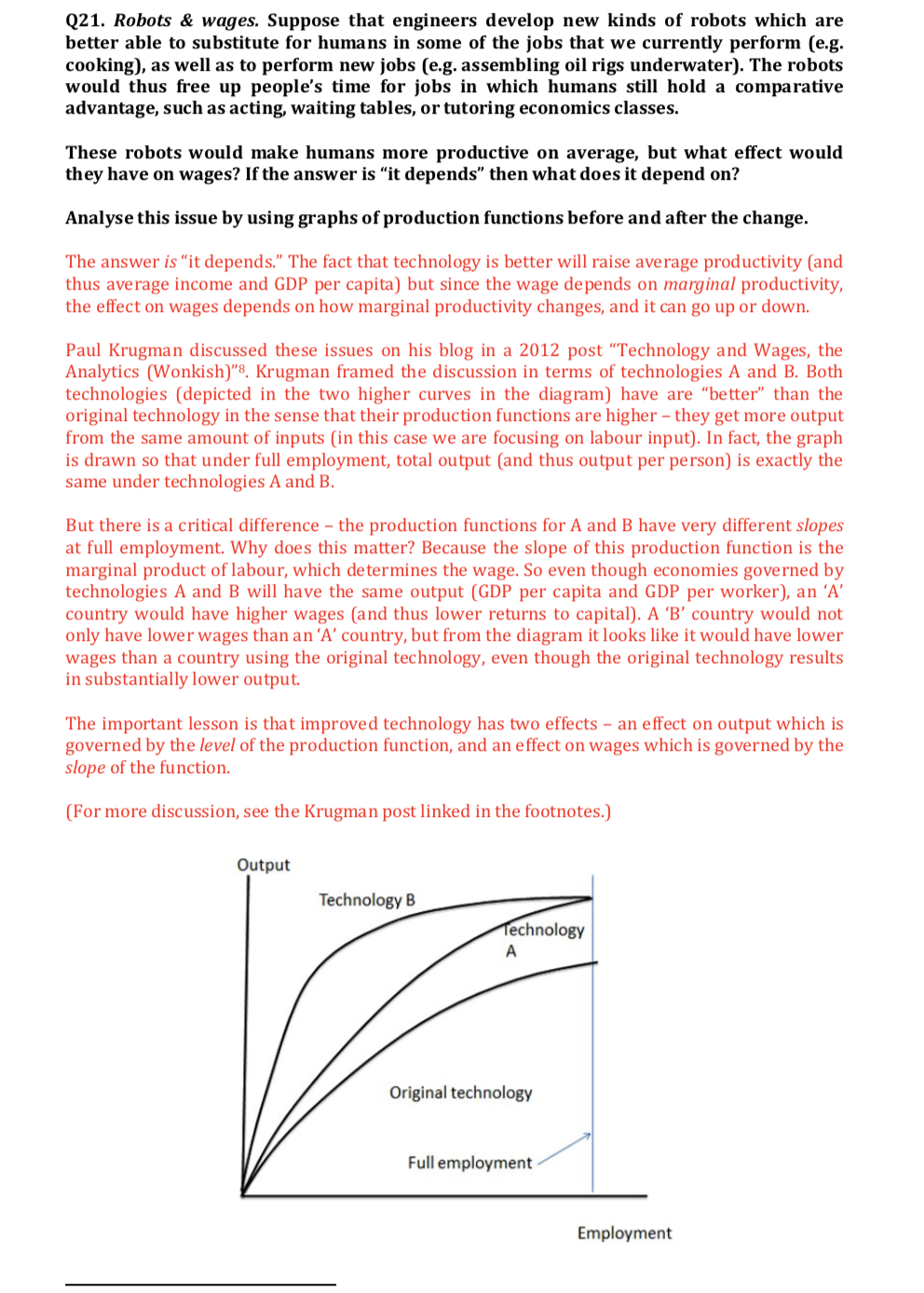step by step explanations please!
Q21. Robots & wages. Suppose that engineers develop new kinds of robots which are better able to substitute for humans in some of the jobs that we currentiy perform (e.g. cooking]. as well as to perform new jobs (e.g. assembling oil rigs underwater]. The robots would thus free up people's time for jobs in which humans still hold a comparative advantage, such as acting. waiting tables, or tutoring economics classes. These robots would make humans more productive on average. but what effect would they have on wages? If the answer is "it depends\" then what does it depend on? Analyse this issue by using graphs of production functions before and after the change. The answer is "it depends." The fact that technology is better will raise average productivity [and thus average income and GDP per capita] but since the wage depends on marginal productivity. the effect on wages depends on how marginal productivity changes. and it can go up or down. Paul Krugman discussed these issues on his blog in a 2012 post "Technology and Wages. the Analytics [Wonkish]"3. Krugman framed the discussion in terms of technologies A and B. Both technologies [depicted in the two higher curves in the diagram] have are "better" than the original technology in the sense that their production functions are higher they get more output from the same amount of inputs [in this case we are focusing on labour input]. in fact. the graph is drawn so that under full employment. total output [and thus output per person] is exactly the same under technologies A and B. But there is a critical difference the production functions for A and B have very different slopes at full employment. Why does this matter? Because the slope of this production function is the marginal product of labour, which determines the wage. So even though economies governed by technologies A and B will have the same output [GDP per capita and GDP per worker], an 'A' country would have higher wages [and thus lower returns to capital]. A '3' country would not only have lower wages than an 'A' country. but from the diagram it looks like it would have lower wages than a country using the original technology. even though the original technology results in substantially lower output The important lesson is that improved technology has two effects an effect on output which is governed by the level of the production function. and an effect on wages which is governed by the slope of the function. [For more discussion. see the Krugman post linked in the footnotes.) Output Technology B Original technology Full employment / Employment







